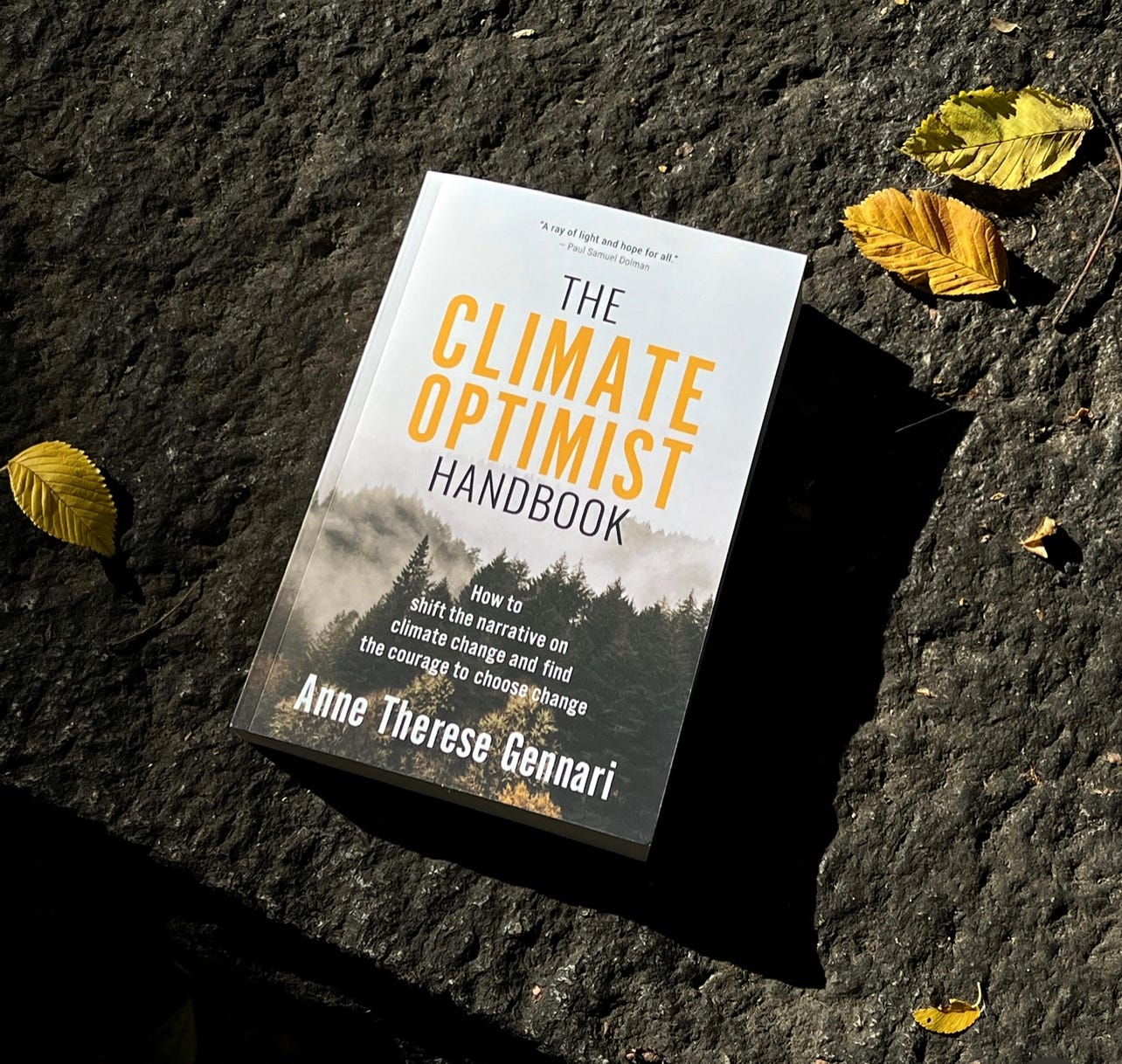Fear or Positivity? What Climate Messaging is Most Effective?
Climate communications is often a topic of debate, with many advocating for more positive framing while others insist that people must be scared into action.
So what is more effective? A fear-based or positive approach? Climate psychologist communications scientist Jessica Kleczka and I created a reel to shed some light on a critical but overlooked topic! 🧠
Jessica's take is that our brains have evolved to pay more attention to negative information as a survival mechanism. However, if a scary message is repeated over and over, we grow desensitized to it, stop responding or even ignore it altogether. We grow fatigued.
We've both seen it happen to many passionate activists, including ourselves. This burnout activated my climate optimist journey, and why I share extensively about the topic in my book.
Fear-based messaging can be powerful in getting people alarmed or interested in the first place. But to retain engagement over time, people need something to hold onto. And that something is hope.
So why are so many communicators focusing on positive messaging these days? The answer is simple - climate has become a top concern in many countries over the last few years, meaning that we rely less on raising the alarm, and more on keeping people engaged and active. 💛
What's your take? Do you think we need more positive messaging in the climate movement?
To activate a journey of resiliency and positive change, get your hands on a copy of The Climate Optimist Handbook






We could all choke on the negativity and doom and gloom coming our way constantly. That is why I am standing for restoring our climate, not just getting to net zero or continuing our transition to renewable energy sources. We can actually restore our atmosphere to preindustrial levels of CO2 in the atmosphere, to return us to the atmosphere we and all life on our planet currently has thrived in. And living toward the future we want, in action, using our voice, our caring and lifestyles to stand for a future our children will thrive in! This to me is the postive direction, that will make the difference for all of us, including generations to come! Check out f4cr.org or check out https://docs.google.com/document/d/1LpaxdcFb4UyWwOwoWzqFXVqUN2LTMr8CJzL5G573RB8/edit?usp=sharing, 10 Reasons to be Optimistic about the Climate.
It's a funny thing--we're wired to go toward what we pay attention to. When we're totally focussed on the awfulness...it's hard to focus on remedies.
What most of us want, but are afraid to even consider since it doesn't seem possible, is restoring a historically safe climate, meaning one that humans have actually survived long-term. It's close to pre-Industrial.Finally, there's a growing movement to do just that.
Restoring a safe climate for our children and future generations means getting to net-zero AND removing about a trillion tons of CO2 from the air--safely, swiftly, and affordably.
Nature shows us how it can be done. Nature ramps up photosynthesis in the ocean and pulls out about a trillion tons of CO2 regularly, leading up to ice ages. In addition, she packs away most of the CO2 on earth in limestone—built from the shells and bones of sea creatures. We can now make synthetic limestone—and literally build and pave with CO2. It’s already happening.
These and other natural-process climate restoration solutions are demonstrated, safe, low-cost, and could soon be ready to go—they’re just not well known.
I'd love to speak with you about this, and also urge your readers to find their way to FoundationforClimateRestoration.org.